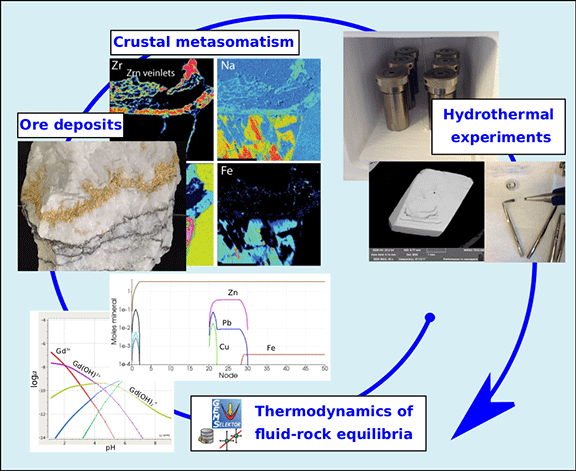New Research Group lands Department of Energy Grant to Study Rare Earth Elements
September 17, 2020
Socorro, N.M. - New Mexico Tech scientist Dr. Alexander Gysi recently received a $895,603 grant from the Department of Energy (DOE) to study fundamental chemical properties of rare earth elements in hydrothermal fluids.
 Gysi is an economic geologist at the N.M. Bureau of Geology and Mineral Resources
Geologist and an assistant professor in New Mexico Tech’s Earth and Environmental
Science Department.
Gysi is an economic geologist at the N.M. Bureau of Geology and Mineral Resources
Geologist and an assistant professor in New Mexico Tech’s Earth and Environmental
Science Department.
Rare earth elements (REE) are are often used as key components in high technology and green technology devices, such as energy efficient lights, touch screens, and permanent magnets used in wind turbines and hybrid cars.
This project will support two Ph.D. students and two post-doctoral researchers at the New Mexico Tech Institute of Mining and Technology.
“I have to say this is really a major boost in building up a new research group here in the Bureau at NMT,” Gysi said. “We will have a world-class lab to study critical minerals and aqueous fluids with experimental capabilities that will set us apart from many other labs worldwide. I see this as a great opportunity to forge new collaborations and advance research on the thermodynamics of fluid-rock interaction.”
Gysi said this research could help the mining industry develop new methods of extracting REEs from aqueous sources in the future.
"Knowledge about the thermodynamic properties of REE species in hydrothermal fluids has also a potential to contribute to the development of new chemical REE extraction techniques,” Gysi said. “The models generated from this study can then also become interesting for metallurgy and could potentially help enhance chemical REE extraction/separation methods from minerals."
Rare earth elements occur in trace amounts in the Earth’s crust, but can be concentrated in economic mineral deposits by hydrothermal processes. Aqueous fluids transport the elements at high temperatures and pressures until they become constricted and minerals containing REE precipitate in the rocks. Thermodynamic modeling can be used to predict the mobility of the REE and other metals in these fluids and help explain field observations and mineral assemblages found in ore deposits.
“For the rare earth elements, we actually don’t know very much about their thermodynamic properties or their behavior in water at elevated temperature and pressure” Gysi said. “The funding agencies are starting to realize how important this topic is and that very few people have expertise on this type of research.”
The thermodynamic processes involved in the formation of these deposits are poorly understood. This is where laboratory experiments and thermodynamic databases play a key role for making progress in this research area. This project’s experiments will focus on how slight differences in molecular properties such as ionic radius, ion size, and ionic charge affect the behavior of REE in aqueous fluids at temperatures up to 350°C.
In addition to funding students and post-docs, the grant will support the purchase of a Calvet-type calorimeter to measure heat generated during reactions, hydrothermal reactors with pH electrodes able to measure pH at high temperatures, and a UV-Vis spectrophotometer to analyze the chemical composition of aqueous fluids.
Data gathered during these experiments will be used to create an internally consistent thermodynamic database, called the MINES thermodynamic database (https://geoinfo.nmt.edu/tdb), which other researchers can use to model the behavior of REE in hydrothermal systems. This is part of a larger collaborative effort with the GEMS code development team at the Paul Scherrer Institute in Switzerland.
One of the most ambitious goals of the project is to test whether the Helgeson-Kirkham-Flowers (HKF) semi-empirical equation of state used to predict how metals behave in fluids at high temperatures and pressures can entirely revised to more closely match observed experimental results.
“At high temperatures and pressures, these theoretical models and reality can really diverge significantly,” Gysi said. “My hope is that we will make some new discoveries that will enable us to develop a game-changing model for predicting the chemical properties of aqueous species in hydrothermal fluids. But always when we do experimental work there are many uncharted areas and a potential to make some significant discoveries, which cannot be determined a priori.”
The New Mexico Bureau of Geology and Mineral Resources is a non-regulatory research and service division of New Mexico Tech in Socorro. For 93 years, the Bureau has served as the geological survey for the state of New Mexico.
– NMT –